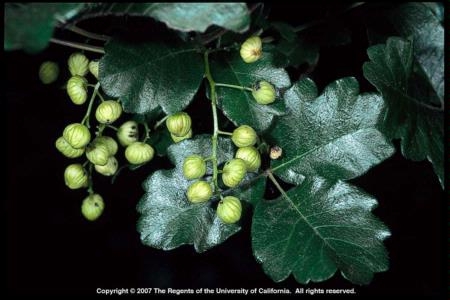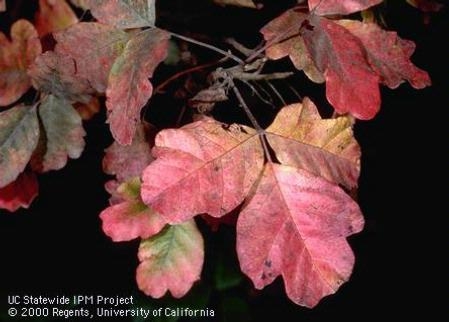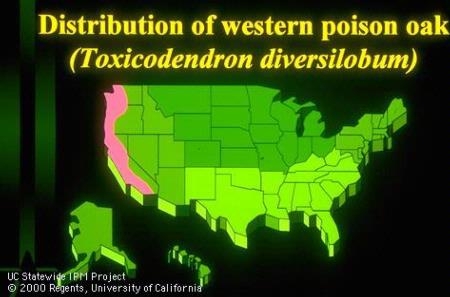Poison oak is the most hazardous plant in California. It gained this distinction due to the annual number of working hours lost from allergic contact dermatitis caused by poison oak. The allergic reaction occurs in 80-85% of the population. It can cause skin irritation, itching and blisters.
Transmission of the allergen can occur by direct contact with the plant at any time of year; by touching contaminated clothing, tools, or animals; or by breathing the smoke caused by burning poison oak. The smoke is extremely hazardous. Inhaling this smoke can cause severe respiratory irritation. Never purposely burn poison oak.
A native of Western North America, poison oak (Toxicodendron diversilobum) can thrive in a variety of settings. It can grow as a shrub or as a climbing vine. Leaves normally consist of three leaflets, but not always. Leaves can be glossy or dull. In the spring these plants produce flowers and in the summer berries. In fall foliage turns from green to orange and red.
To find out more about this plant including: impact on livestock, treating allergic contact dermatitis, biology, and management, please see UC ANR’s Poison Oak Pest Note.


